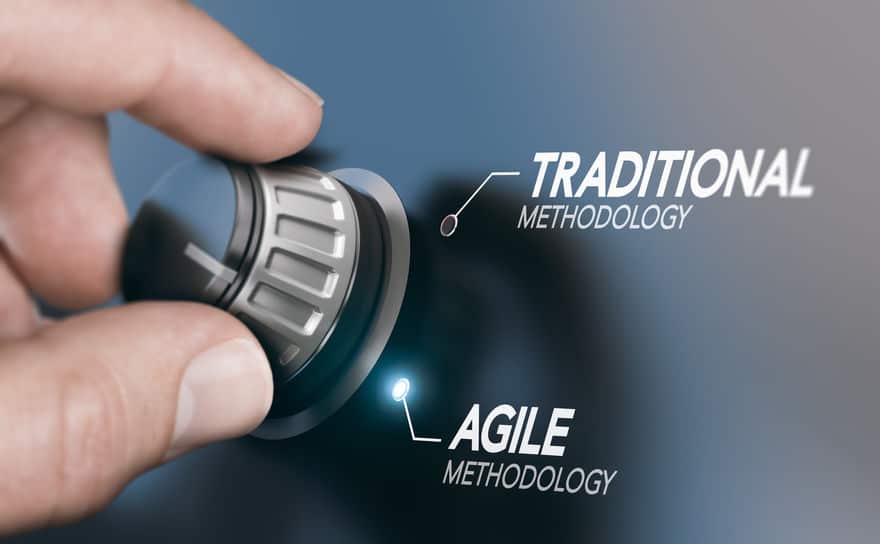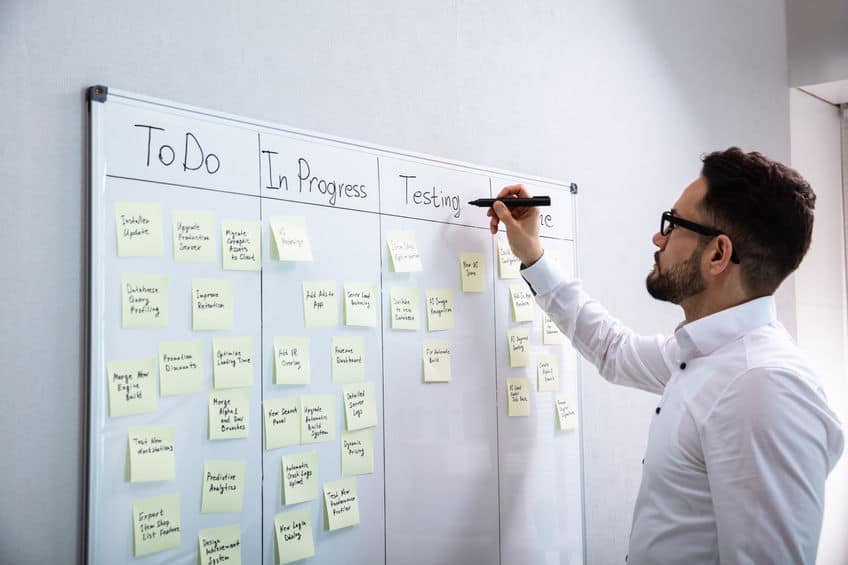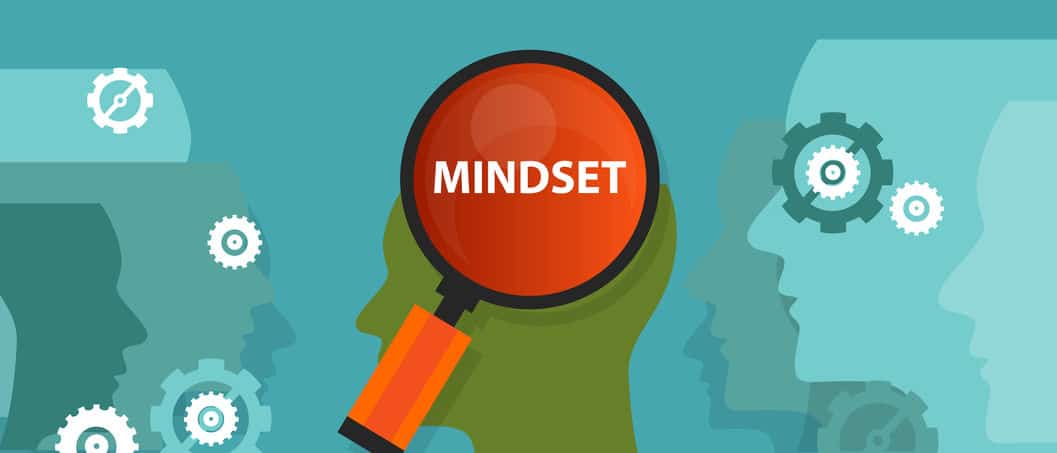As the world of business rapidly changes and new approaches and techniques are developed, the business analysts also needs to keep up with these developments and adapt themselves and their work to the new climate. Nowadays, the agile ways of working is more and more replacing the traditional ways of working and it is imperative for business analysts to adopt agile business analyst mindset to continue to be successful.
Table of Contents
Agile Mindset
The agile mindset involves the set of attitudes and beliefs that drives the thinking and actions of a business analyst and supports the agile context so the resulting value of the project can be maximised with minimal output. It ensures the efficient and high-performance teamwork and effective and timely delivery of the right products to the right people (i.e. the customer).
The agile context in the organisation enables flexible and prompt response to potential issues and empowers team members to make decisions more democratically.
The agile mindset values do not differ much from common human values and they are defined in the agile manifesto which we will discuss further on this article. The main aspects of this mindset include rapid delivery of value, extensive collaboration, willingness to learn through numerous iterations, avoiding waste through simplification, adaptation to context and new realities, reflections on feedback, and production of the highest quality products.
The ideas of the agile mindset came to full use in software development, but they are not new or exclusive to this industry. Over time, people discovered that these ideas can be applied in any area that uses creative work to produce value.
This includes law firms, architecture companies, marketing, consultancy operations, life sciences, and many others. What is common for these domains is that all of them employ the skill, knowledge, and collaboration of everyone involved to bring value to customers. Business analysis, as a domain that almost completely depends on these traits, is a perfect ground for applying the agile mindset.

The Agile Methodologies And Framework
The agile approach recognises that every situation the business analysts find themselves in is unique, so, consequently, there is no single, unified, catch-all agile approach. Each context has its own variables and requires the use of different combinations of various techniques and tools. The key to the successful implementation of the agile approach is deciding which combination of tools and processes will produce the best results on a project set in a particular context.
The agile includes a number of branded frameworks suitable for certain environments and contexts. Among the most widely used agile frameworks are scrum





All of them have some shared characteristics: respect and creativity encouragement, the emphasis on rapid delivery, feedback, and learning, high level of collaboration and communication between team members and stakeholders, and dividing work into smaller portions which are to be delivered incrementally and iteratively.
The Agile Manifesto
The foundation for the agile software development revolution was the manifesto for agile software development
The industry, at the time, was marred by exceeding the budgets, broken deadlines, and failures to achieve desired goals. Also, the employees working on software development were often unhappy, stressed, and did not feel good about the work environment.
The agile manifesto basic principles have their roots in software development, but can be applied and used for business analysis in any environment. Replacing the word “software” in these principles with a “solution” uncovers the philosophy easily applicable in any context. The agile manifesto principles state the importance of:
- Uncovering Better Ways Of Developing Solutions By Doing It And Helping Others To Do It – the best way to come to a solution is by experimenting and trying things out, instead of just theorising about it;
- Individuals And Interactions Over Processes And Tools – close collaboration with stakeholders and understanding their needs is the necessary prerequisite of developing a successful solution;
- Working Solutions Over Comprehensive Documentation – the focus of the agile approach is on developing something, presenting it to the stakeholders, and using the immediate feedback to adapt their process. On the other hand, documentation is only valuable when it’s written for the exact purpose and can be used for further discussions;
- Customer Collaboration Over Contract Negotiation – the business analysis can satisfy needs only it understands them, and that can be done by the continuous process of presenting incremental solutions to the interested parties and employing the received feedback. The constant collaboration with stakeholders fine-tunes this understanding and uncovers the new needs;
- Responding To Change Over Following The Plan – although the agile approaches do employ planning, the main measurements of success are the degree to which the solution satisfies the customer’s needs and the value that solution produces. This success can only be achieved through the ongoing process of learning and receiving feedback to discover new changes and needs and quickly respond to them.

The Principles Of The Agile Business Analysis
The Agile Extension to the BABOK (Business Analysis Book of Knowledge) guide
See The Whole
This principle involves performing business analysis through a holistic approach, with the focus on overall context and changes. The needs can not be understood without understanding the context in which they occur just as well as the development of the maximum value solution is only possible through analysing the contextual influence and fully understanding the stakeholders’ needs.
Think As A Customer
Thinking like a customer implies that the business analyst when developing a solution, understands and takes into consideration the needs and expected user experience of a customer. Any stakeholder interacting in a solution can be seen as a customer for these purposes.
The business analysis begins with the consideration of high-level customer needs and, as the process progresses, breaks them up into more detailed and specific components. The proposed solution should be able to satisfy all of these needs.
Also, the agile approach enables the business analyst to revisit the available information with the new knowledge based on the received feedback and adapt the process in order to reach the desired goal. Every new iteration of the solution employs this newly gained information to make sure that the customer’s needs are fully satisfied.
Analyse To Determine What Is Valuable
The amount of information and potential tasks to be performed on the project is often overwhelming. The business analysts need to assess and prioritise work at all stages of the project to secure the maximum value outcome. To be able to do this, they must fully understand the requirements’ purpose, needs structure, and the components of the solution. By properly prioritising, the amount of work needed to develop a solution decreases, and the goals are accomplished early and continuously.
Get Real Using Examples
The understanding of the solution and how it relates to needs is best done through developing the models that allow insight into the multiple aspects of the stakeholders’ needs. The stakeholders are heavily involved in model development and elaboration, ensuring a shared understanding of the process. The models can be more or less abstract or broad depending on the audience they are intended for and the declared purpose. The developed models can be used to identify specific needs, develop acceptance criteria, or help design and test solutions.
Understand What Is Doable
The business analysts’ work is often performed under certain constraints. This principle involves understanding how to deliver the solution of the highest possible value while working under the constraints. These limitations can include the technological capability, the team’s skills, or the time frame in which the solution is supposed to be delivered. Through a detailed analysis, the business analyst determines what is doable in given conditions and focuses on delivering the solution within the constraints.
Stimulate Collaboration and Continuous Improvement
The work on a business analysis project includes identifying complex needs and problems and delivering complex solutions. This process involves the excessive amount of information and tasks to be done which no one would be able to do by themselves.
The business analyst needs to create an environment in which every invested stakeholder can make a valuable contribution to creating the solution. The continuous collaboration of those with needs and those delivering solutions for those needs is crucial for the success of the project.
Another essential aspect of agile business analysis is continuous improvement, meaning the business analysts should constantly work on improving the proposed solutions and the processes that lead to them.
Avoid Waste
Certain activities performed during the business analysis work may not bring value to the project. To be able to deliver the maximum value on time, the business analyst needs to identify those activities and eliminate them from the process if possible. Any such activity can be considered a waste. Waste includes activities that have some value but do not directly contribute to the solution and activities that do not have any value whatsoever to the customer.
Conclusion – Agile Business Analyst Mindset
Having an agile business analyst mindset will help you to continue to be successful as a business analysis and help embrace new ways of working.
You can develop an agile business analyst mindset by understanding about the different types of agile business analyst certifications;



